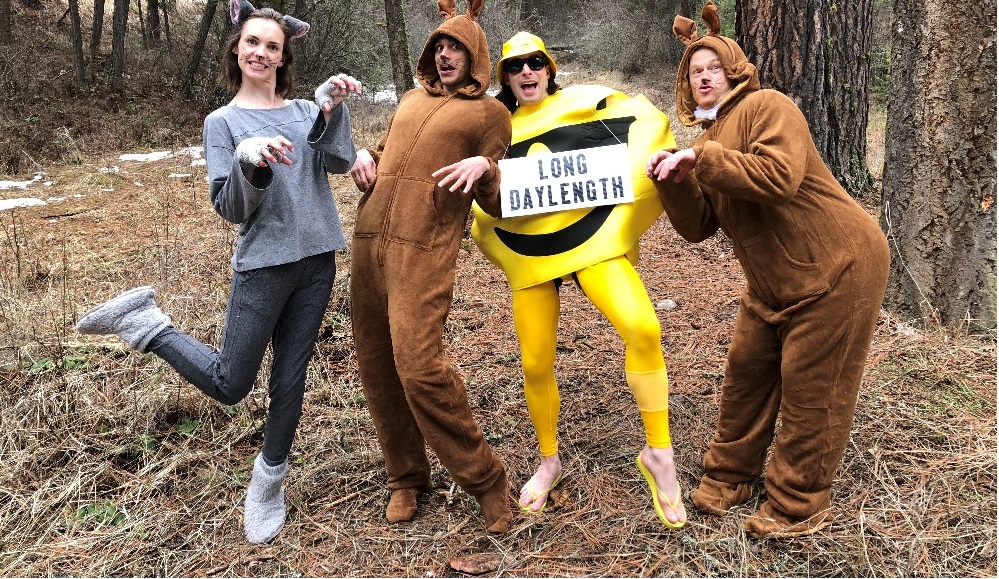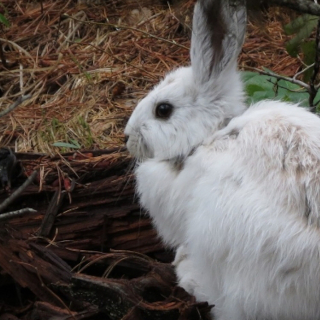Putting the Moves in Science Communication

How did four wildlife students find themselves spending their Friday evening dancing in costumes and make-up in the forest? . . .
As with most stories it began with the red-headed stepchild of the lab, in this case Brandon “Ginger Snap” Davis. One day Brandon received an email from his advisor about an opportunity to present at a graduate symposium. With the exception of Dr. Mills, no one loves talking about coat color change more than Brandon, however, a new presentation category caught his eye. Brandon immediately sought the wise council of longtime friends Alex Kumar and James Goerz. What originally began as something we dreamed and joked about quickly developed into a reality, once we realized we had a professional dancer in lab, Lindsay Barnard. Spurred on by the enthusiastic prodding of Dr. Mills, we started planning to turn the dance into a reality. As we reflected more about the potential for interpretive dance to communicate science we became more and more excited.
Although the performance was intriguing to all, we were also concerned about the possibility that certain forms of communication would hurt our credibility as budding scientists as well as the credibility of our research as a whole. Despite this fear, we were excited about this opportunity because it had the potential to reach a broader audience in a novel way. Communicating science through interpretative dance, while unorthodox to say the least, requires audiences to actively interpret the information provided in their own unique way. The act of performing the concepts we study as opposed to simply stating the facts turns what is traditionally a one-way form of learning into a two-way interaction between the scientist and their audience. We realize that publishing our hard work in peer-reviewed journals will always be mainstream and required of our discipline. There are numerous examples of scientists, however, who have extended the reach of their research to audiences outside of the scientific community. Over the course of our education and apprenticeship as young scientists, we have come to realize that society as a whole holds natural resource decisions in their grasp. Our responsibility as communicators is to inform the public about the potential consequences of their decisions. Traditionally, scientists have not been the most approachable or relatable of public servants. Our goal is to bridge that gap through creative and engaging media.
We hope you enjoy this video as much as we enjoyed making it!!!
Brandon “Ginger Snap” Davis, Alex “Brown Sugar” Kumar, James “Sunny D” Goerz and Lindsay “The Dancing Queen” Barnard
We'd like to thank Jaco Barnard for his help with video production and editing, and Molly Feltner (and Jen Feltner) for their help with producing and editing the intro video, adapted from "Better Than a Snowball's Chance." Much of this work was also inspired by our recent Science paper, "Winter color polymorphisms identify global hot spots for evolutionary rescue from climate change".
